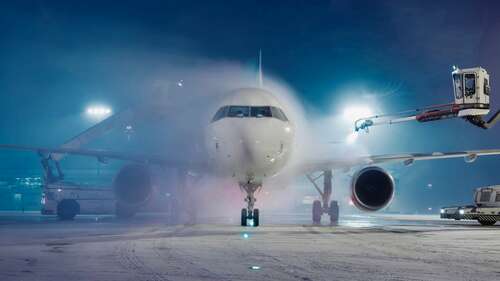
Four types of de-icing fluid are used globally: Types I through IV. Type I is the thinnest, only able to protect the aircraft from snow and ice for just six to 11 minutes. If you do not take off in that time, you must reapply it to keep your plane protected. It’s red-orange, helping applicators see which parts of the aircraft where it’s applied.
Type II is a thick, clear or straw-colored, de-icing fluid that protects planes for 20 to 35 minutes. This is usually used in larger airports, where airplanes have longer taxi times before departing. However, aircraft must take off at 100 knots or greater to ensure the de-icing fluid falls off the plane. If not, it could affect the plane’s performance and handling.
Type III is less thick than Type II, thus making it useful for only ten to 20 minutes. However, it only requires a 60-knot take-off speed, making it great for smaller commuter aircraft flying from regional airports. This fluid is colored yellow-green to make it easier to see during application.
Finally, Type IV is the latest iteration of de-icing fluids. It’s emerald-green and about as thick as Type II, requiring the same 100-knot take-off speed. However, it has a longer effectivity time — between 35 and 75 minutes — making it perfect for congested air spaces like New York, where delays could be as long as an hour.
De-icing technology is just one of the many ways that make airline flying the safest method of transportation. While we occasionally hear about deadly air crashes, and the media makes a spectacle out of them, the fact that they happen so rarely is why they’re always big news.

